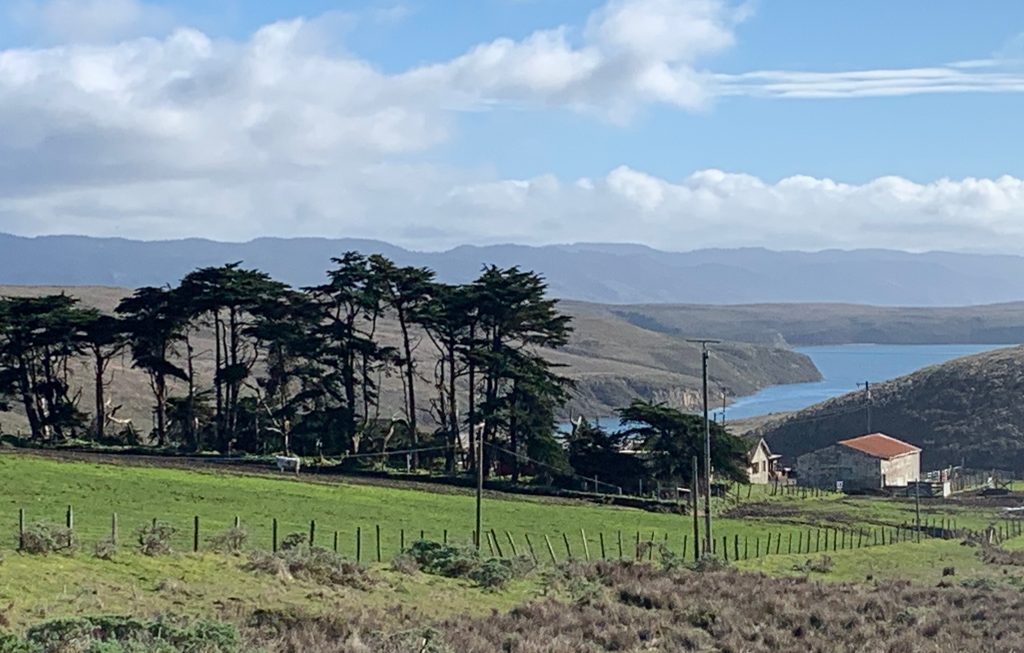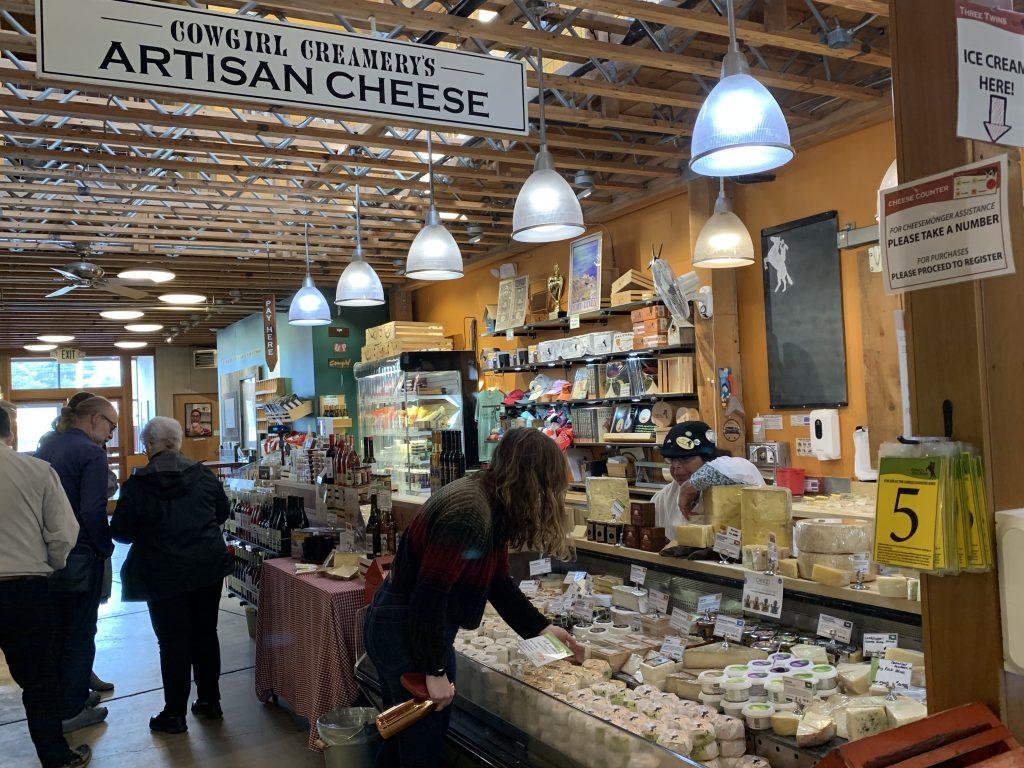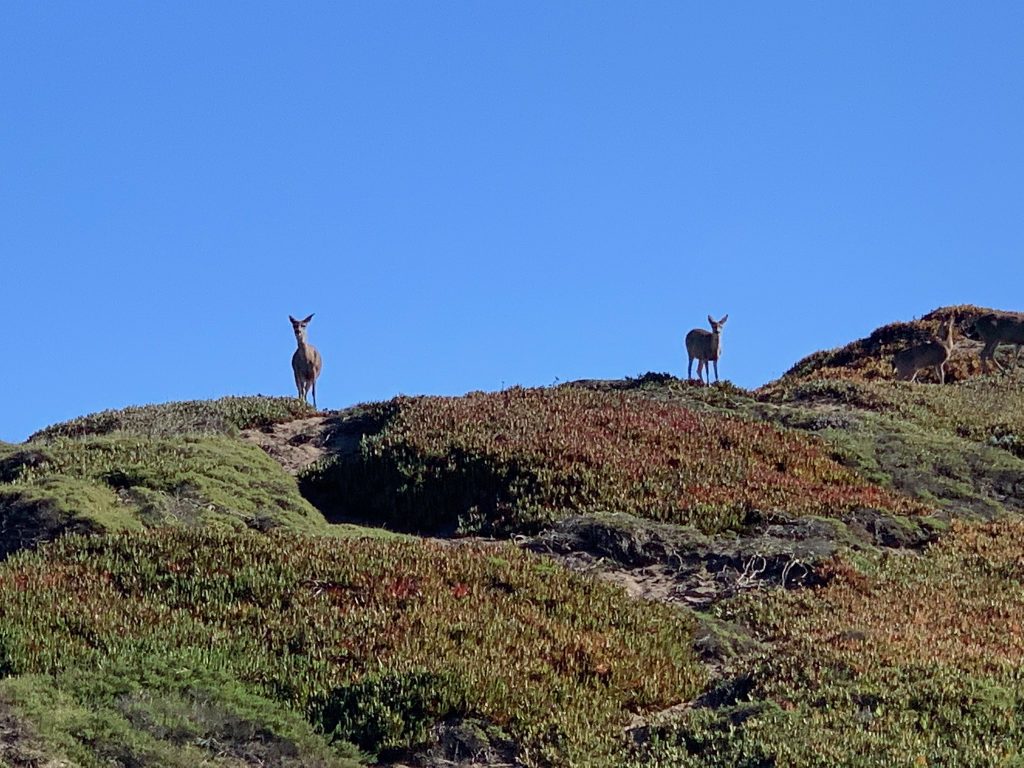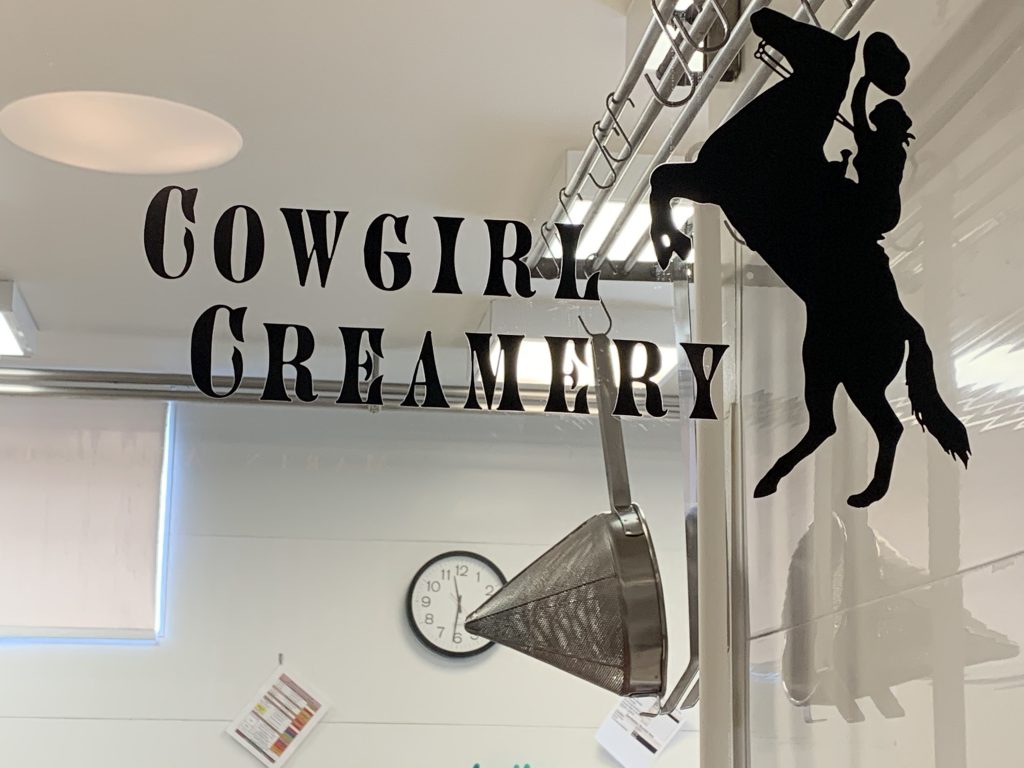
The San Francisco Bay Area has an extraordinarily rich and diverse food system that is an integral part of the region’s economic prosperity, environmental sustainability and regional identity. A recent white paper estimated the annual value of the food economy to be around $113 billion, employing close to half a million people, around 13 percent of the region’s workforce. While Marin County, just north of the Golden Gate Bridge, is only one part of this system, it is nationally known for the quality of its food products. However, not so long ago, the county’s agriculture lands and open space were threatened by rampant development
The powerful book Farming on the Edge: Saving Family Farms in Marin County by John Hart (University of California Berkeley 1991) recounts the early efforts to save the region from over-development. In his foreword to the book, Wendell Berry writes that the success of these open space initiatives “Brings tears to your eyes.” He notes that the landscape would not have been saved if the conservationists and the country people had not made common cause. And he concludes that his one wish for the future is that there would be more conversation about the value of locally produced food. He opines that “Securest guarantee of the long-term good health of both farmland and city is, I believe, locally produced food.”

Written more than thirty years ago, Berry’s dearest wish has indeed come true. Today Marin County’s locally and organically grown products are prominently featured in all the regional farm markets and restaurants. Food tourism is big business. Brands like Cow Girl Creamery are nationally known and the cheeses are so desirable that they have been acquired by international corporations.
Two strategies helped preserve the farmland. First, was the local government’s recognition of the need to act by adopting plans and appropriate zoning for agricultural conservation. Second, was the establishment of the Marin Agricultural Land Trust, one of the earliest land trusts to focus on working lands in the country. Today the trust holds easements on 86 family farms and ranches protecting 54,209 acres.

However, the future of one portion of the agricultural lands in Marin is still uncertain – the lands known as the Pastoral Zone of Point Reyes National Seashore. The back story of these now 13 farms and ranches in the northern section of the park is a long and winding tale. Originally, the idea behind creating a system of National Seashores was to secure access to the coastline near large population centers for the scenic and recreational enjoyment of the public.
This was the goal when Point Reyes was designated in 1962. The existing ranching and agricultural uses of the land within the park boundaries, uses that dated back over 150 years, were not seen as incompatible with the establishment of the park. In the following decades, the National Park Service re-prioritized its attention to include a much greater focus on natural resource protection. The agency and many environmental activists began to raise concerns about the impact of farming and ranching practices on these resources. The debate only intensified following the controversial cancellation of a lease for harvesting oysters in Drake Estuary and the re-introduction of a now expanding Tule Elk herd into the park. Congress has weighed in on the side of continued ranching and a number of environmental groups on the side of re-wilding.
The debate was framed as cattle or elk?

Over the years, the National Park Service response to this contentious issue has been to undertake more planning and environmental assessments. A final decision on the future of working lands within park boundaries now projected to be issued in the Spring of 2020. The preferred alternative from these plans seems to be a continuation of use for landowners with many caveats and proposed new measures for environmental protection, elk conservation etc… Seems sensible, but perhaps a more vigorous endorsement of the cultural value of the dairying and ranching with the park is what is really needed. In Farming on the Edge, Jon Hart writes that if agriculture is to survive in West Marin Point then Point Reyes cannot be be excluded – “Point Reyes, after all, had been the heartland, the first and famous dairy district, with the foggiest fog, the greenest grass and the most hospitable terrain”.

Today, as when the above was written in 1991, the dairies on Point Reyes constitute a significant percentage of the milk production in the county. Of the county’s 23 dairies, 8 are within the park. This is not just a historic use, but an important part of the regional food web and what makes the region culturally significant. The Marin Agricultural Land Trust supports the importance of these properties for food production. In addition the organization makes the case for their environmental value as a managed coastal grassland for habitat for endangered species, for sequestering carbon, storing water, supporting pollinators and keeping invasive plant species in check
In conclusion, perhaps we need to revisit Wendell Berry’s 1991 wishes and words of wisdom about the value of a local agricultural economy. “Such an economy would make practical and economic connections between the people of the farms and the people of the city. These connections are necessary, and they imply further connections of mind and spirit.” Decades later one of the founders of Cowgirl Creamery Sue Conley agrees, “The ranches have contributed significantly to the sustainable food scene” in the area. It’s a great model to have working farms in a national seashore, connecting consumers with farmers. There’s a consciousness that comes from being around nature and farming that’s really important to urban life.”
Unfortunately, this vision of what our parks and protected areas should be striving for is not yet in the tradition of the US National Park Service. Our current model gives a thumbs up to scenery, recreation, natural resource protection, and even historic properties, but there is no provision for living and working landscapes such as they have in Europe and other parks across the globe. Now we just need the National Park Service to add this to the values for which our parks were created.
Note: For an in depth discussion of the challenges the National Park Service has faced and still faces today, see the excellent book by Laura Watts The Paradox of Preservation: Wilderness and Working Landscapes at Point Reyes National Seashore University of California Press 2016.



2 Responses
Is this not what the National Park Service has done in Cuyahoga Valley National Park in Ohio? I know several NPS staffers who are working on these very issues, trying to expand the model of land for humans, wildlife, food, and ecosystem benefits–all in one. The real problem is when humans consider themselves to be set apart from and independent of the world we inhabit. Food production is going to have to change to work with the ecosystem, rather than riding roughshod over.
Hi Beth Burnam
Thank you for your thoughtful comment. And yes the work of the NPS in restoring the agricultural landscape in the Cuyahoga Valley National Park is a model to emulate. My hope is that these ideas will spread to other park units and more importantly outside of park boundaries. The controversy surrounding working landscapes in Point Reyes has been framed as an either/or proposition. As you note, there is another way and I hope that NPS will follow that path.